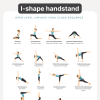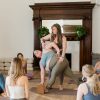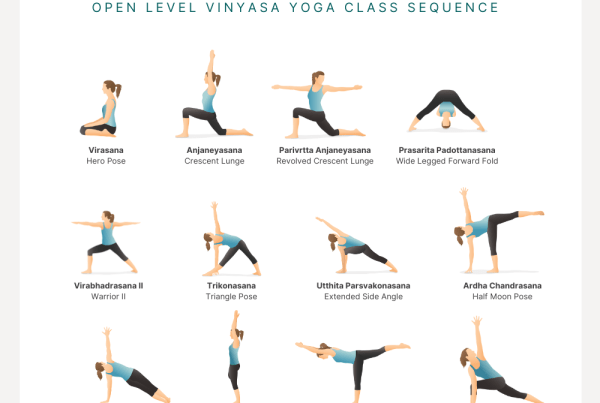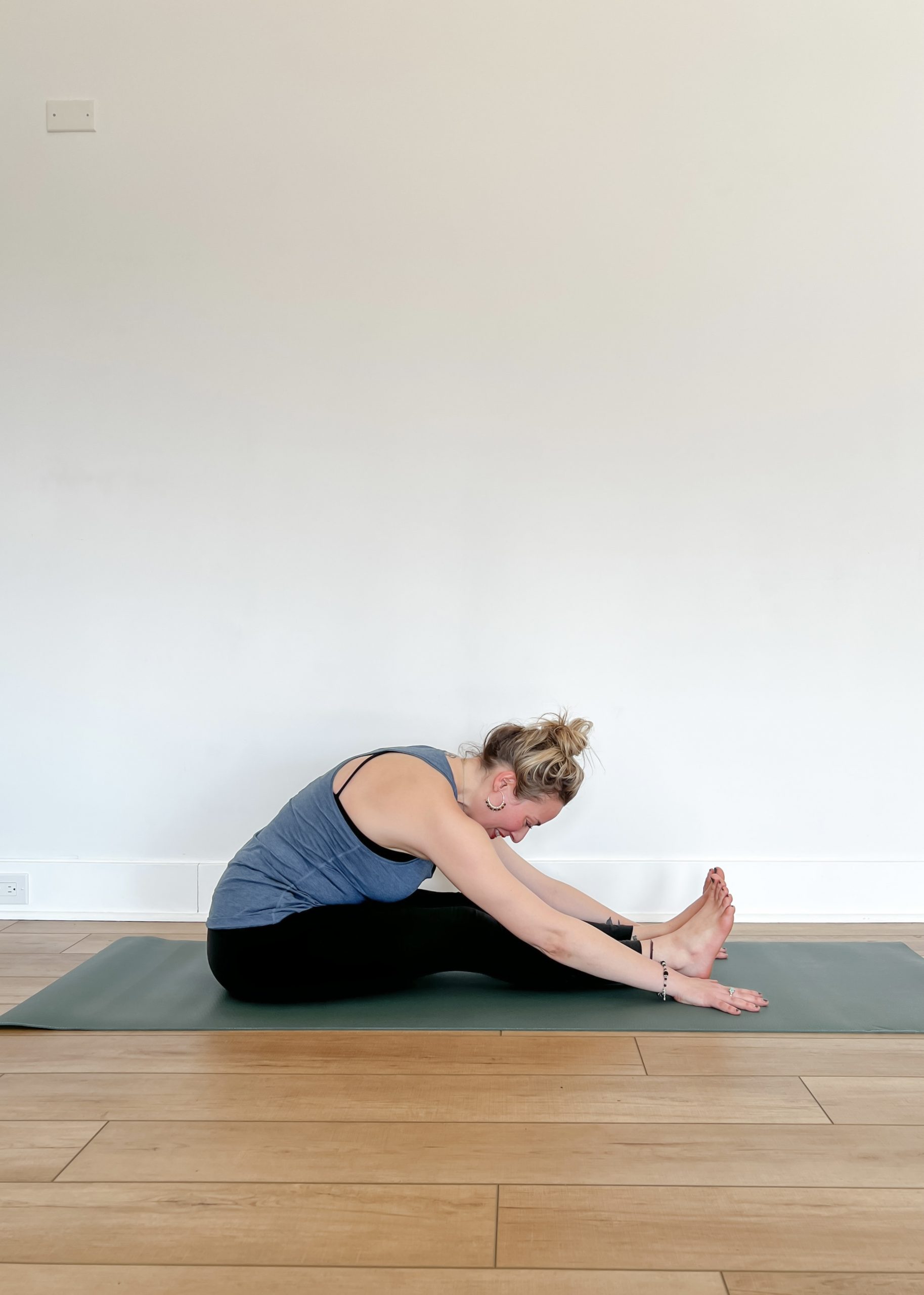
Ayurveda is a science that helps you understand your own rhythms and the rhythms of the world around you. It’s often called the sister science to yoga because Ayurveda and yoga are meant tobe practiced together.
Yoga helps you tune into your soul and to the divine. It helps you understand the nature of your mind and access your heart so you can remember who you really are. The elements earth, fire, water, air, and ether are the building blocks that make up everything you experience here on earth through your senses. These elements are what combine to form The Doshas (governing forces that permeate everything in nature).
The Doshas Summarized:
- Kapha Dosha is made up of earth and water and can be recognized as the part of you that’s caring and nurturing.
- Pitta Dosha is made up of fire and water and can be recognized as the part of you that’s passionate and driven.
- Vata Dosha is made up of air and ether and can be recognized as the part of you that’s creative, imaginative, and social.
Understanding Vata Dosha
Vata Dosha is made of the elements air and ether and some of the qualities of Vata are cold, light, dry, mobile, subtle. Air is literally all around you and is always moving. When you’re in total stillness, you can still feel the air around your skin, eyes, nose, and ears. Ether is sometimes understood as space or this “stillness” I’m talking about here. It’s what can “contain” or “hold”. When air and ether come together to create Vata Dosha, there is potential for creation and also a container to just be.
You can see Vata in you whenever you come up with a new idea or a different plan. Vata manifests as your ability to express, craft, and share. On the other end of that, Vata is also the only Dosha that moves, so this may lead to feelings of emptiness or lack. Excess Vata can also cause restlessness, anxiety, and feelings of loneliness.
One of the main principles of Ayurveda is:
LIKE INCREASES LIKE AND OPPOSITES BALANCE.
For example, if it’s cold outside and you’re shivering, you will get colder if you drink ice cold water. If you drink hot tea, you will warm up because the tea is hot and that’s the opposite of cold. Sometimes, we experience an overload of certain qualities and that Dosha will come out of balance.
When you come on to your yoga mat, you can balance out Vata Dosha by favoring a slower, more grounded practice that doesn’t involve too much uncertainty. A Vata-balancing practice can involve longer holds, deeper breaths, connecting to the foundations, and avoiding too many variations.
Vata Dosha & Janu Sirsasana (Head-to-Knee Pose)
Janu Sirsasana is a great pose to work towards in a class that is focused on balancing excess Vata. It’s a perfect one for anytime you’re feeling frenetic, anxious, empty, like you can’t make a clear decision, or during the time of year when it’s more windy and dry. Janu Sirsasana is incredibly grounding, lengthening, and also a perfect pose to allow more focus on the breathing. It’s also a pose that can he held for a longer time and a pose that provides the space to focus on how the breath can help lengthen your body and release what isn’t serving you anymore.
Supporting Pose 1: Utthita Hasta Padangusthasana (Extended Hand-to-Big-Toe Pose)
When prepping for a forward fold, it’s really nice to start to come into shapes that have the elements of the forward fold you’re working towards. For Janu Sirsasana, it’s helpful to begin opening up the hamstrings and becoming aware of the back of the leg. It’s also important to understand how your leg straightens. It can be a little difficult to understand that the leg muscles need to engage in order to straighten the leg. There should also be an awareness and connection to your toes, which is something you can discover while on your back.
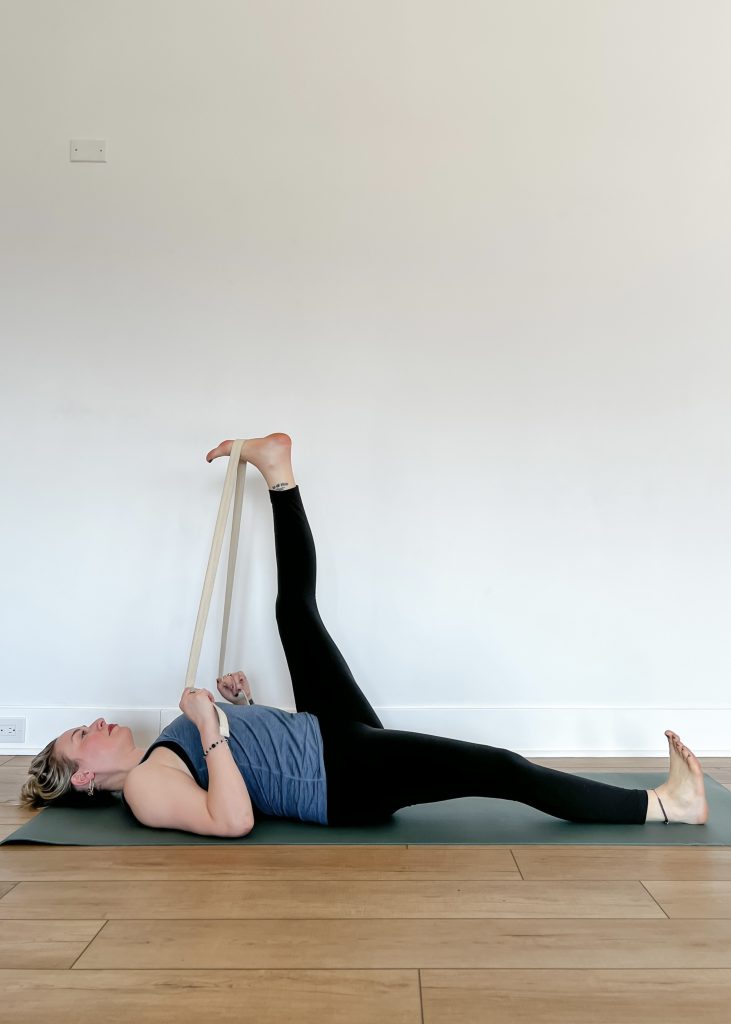
Utthita Hasta Padangusthasana (Extended Hand-to-Big-Toe Pose) Variation: Reclined with a Strap
How to:
- Lie down on your back with a strap. If you don’t have a strap, you can always use a hand towel, scarf, or anything that’s long enough to loop around your foot while keeping your leg long and your shoulders on the ground.
- Bend your knees and step your feet to the ground. From there, notice how your hips are hopefully pretty even and then bend one knee in towards your chest so you can loop your strap around the ball of your foot. As you extend your leg towards the sky, keep your foot slightly flexed and try your best to keep your shoulders on the ground. Engage your thigh to fully lengthen your leg.
- Lengthen your other leg out in front of you, keeping your heel on the ground. Slightly flex your foot and think about your pinky toe moving towards your ear. If you feel like extended this leg created an imbalance in your hips, just rebend your knee and step your foot back to the floor.
- Stay for a few cycles of breathing. You may engage your thighs with each inhale and then see what you can release through the backs of the legs with each exhale.
Supporting Pose 2: Baddha Konasana (Bound Angle Pose)
This pose is a great teacher because it’ll ask you to begin to quiet your mind while also resisting any urge to move around and look around. When you’re in this pose, especially if you fold forward, it can be a very reflective time to focus on your breathing and to notice what parts of your body feel tight or open. You may even notice that as you stay in the pose, your breathing may slow down and in turn, your thoughts will slow down too.
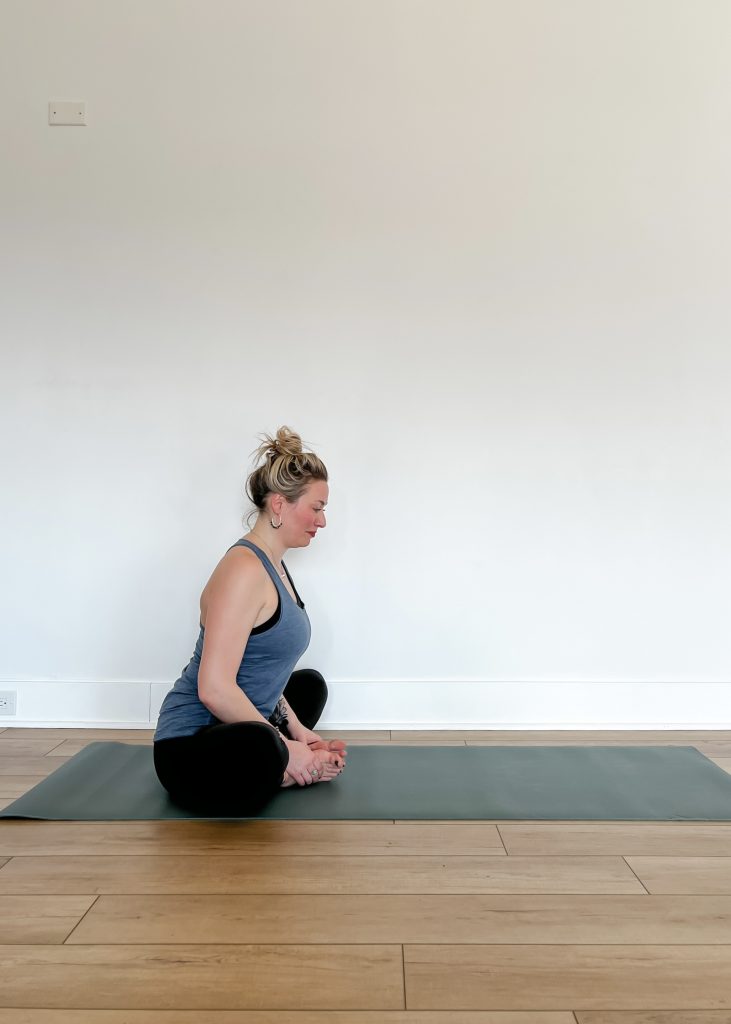
Baddha Konasana (Bound Angle Pose)
How to:
- Begin seated and bring the soles of your feet together, like you’re putting your feet in a “prayer” shape. If you need to sit up on a blanket or any kind of padding, please do so.
- Bring your heels as close to your torso as you can, without compromising your long spine and your ability to sit tall while breathing deeply.
- Press the pinky edge of your feet together (this the part of your feet that you feel on your yoga mat) and peel the inner edges of your feet apart. Imagine your feet are like a little book that you’re opening up slowly and gently. This will allow the inner thighs to soften.
- If you’d like to fold forward, softly extend forward of your feet. You may bring your hands to some blocks or walk them forward in front of you. Stay for a few cycles of breathing.
Supporting Pose 3: Paschimottanasana (Seated Forward Fold)
Paschimottanasana is another pose that will help you quiet your mind and prepare for Janu Sirsasana. It’s a pose that asks you to reach forward into new space, while exposing your back body. This is often a metaphor for moving forward into the unknown while acknowledging that your past is behind you and you’re moving onward knowing you can’t change it.
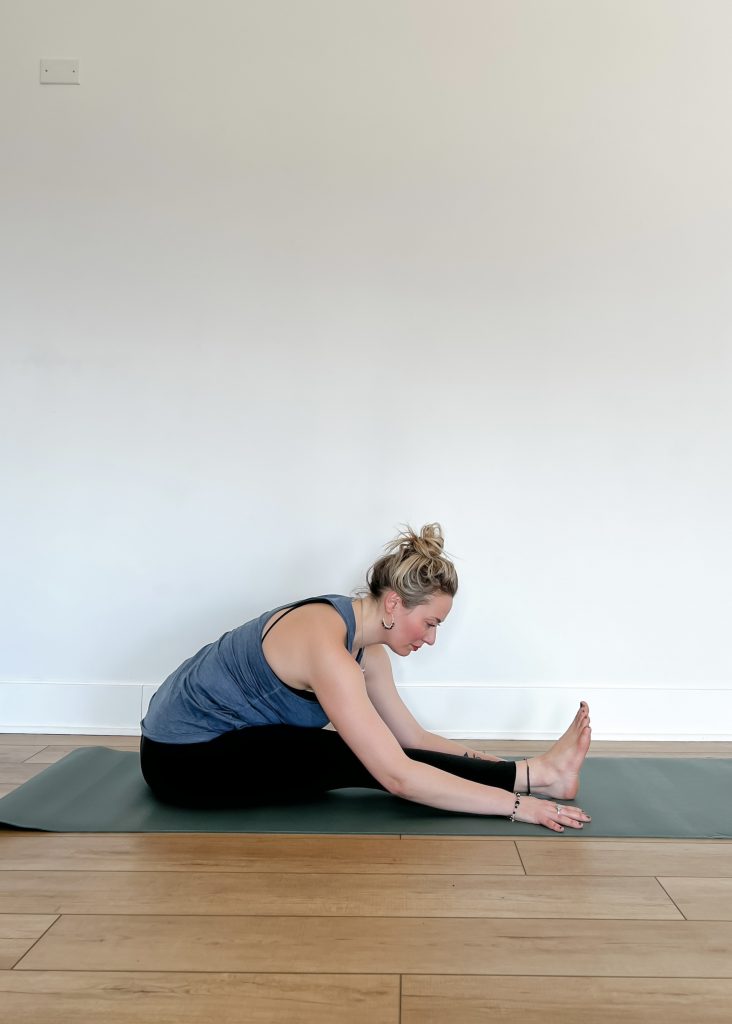
Paschimottanasana (Seated Forward Fold)
How to:
- From a seated position, extend both legs out in front of you. If you need to sit up on something, elevate your seat so you can sit well and breathe deeply.
- Do your best to keep your legs straight, but it’s okay if you need to have a slight bend in your knees. Take a peek at your toes and imagine your little pinky toes can slightly reach back towards your ears. This will help activate your feet.
- Inhale to lengthen your spine and exhale to extend over your legs. Try to lengthen your spine with each inhale and release over your legs with each exhale. Your hands may be beside your legs or at your feet.
Peak Pose: Janu Sirsasana (Head-to-Knee Pose)
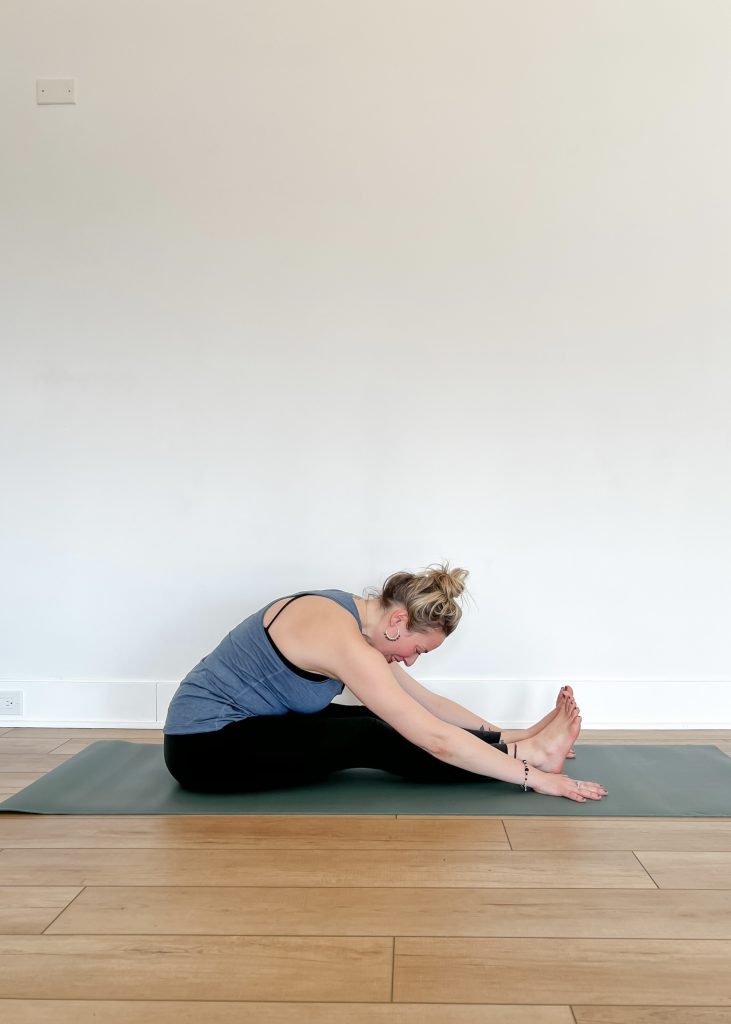
Janu Sirsasana (Head-to-Knee Pose)
How to:
- Sit tall and take padding beneath your seat if you need.
- Extend your right leg forward and bring the sole of your left food to your inner, upper right thigh. Try your best to keep your extended leg in front of you, as opposed to out to the side.
- As you breathe in, lengthen your spine and turn towards your extended leg. As you breathe out, turn a bit more while sitting tall.
- As you fold over your extended leg, continue to lengthen your spine with every breath in and revolve towards that extended leg with every breath out. You may place your hands around your extended leg or keep them closer to your hips.
- Try to focus on your breathing as you remain for a few cycles of breath. Perhaps think of something you’d like to focus on more with every inhale and something that you’d like to release with every exhale.
Whether it’s Vata season or you feel you or your students are working with excess Vata, focusing on grounding poses like forward folds can be transformational. Adding breathing cues into your practice can also help balance out the franticness that often comes with excess Vata.



